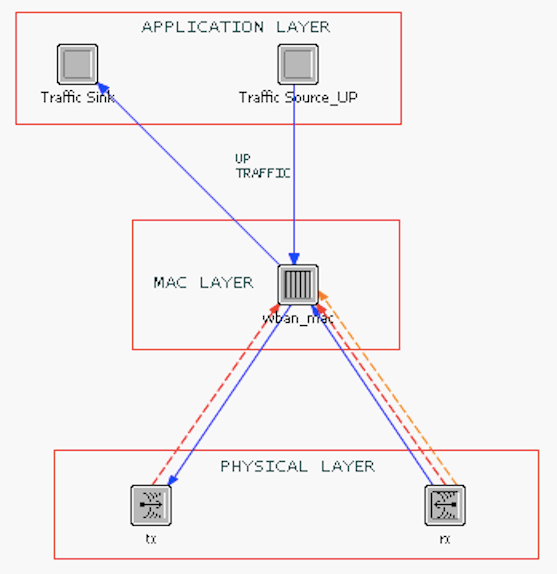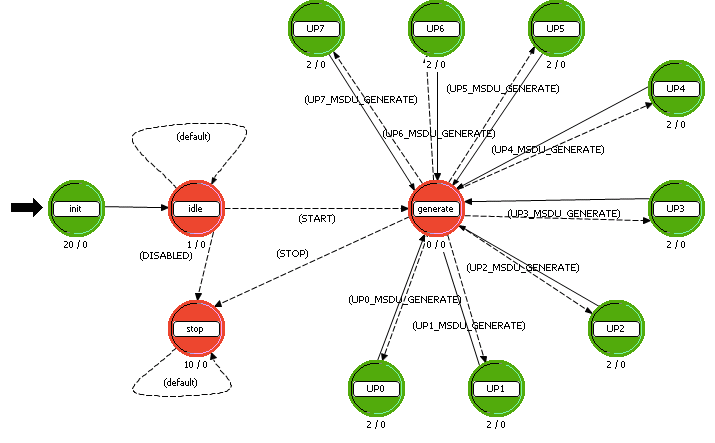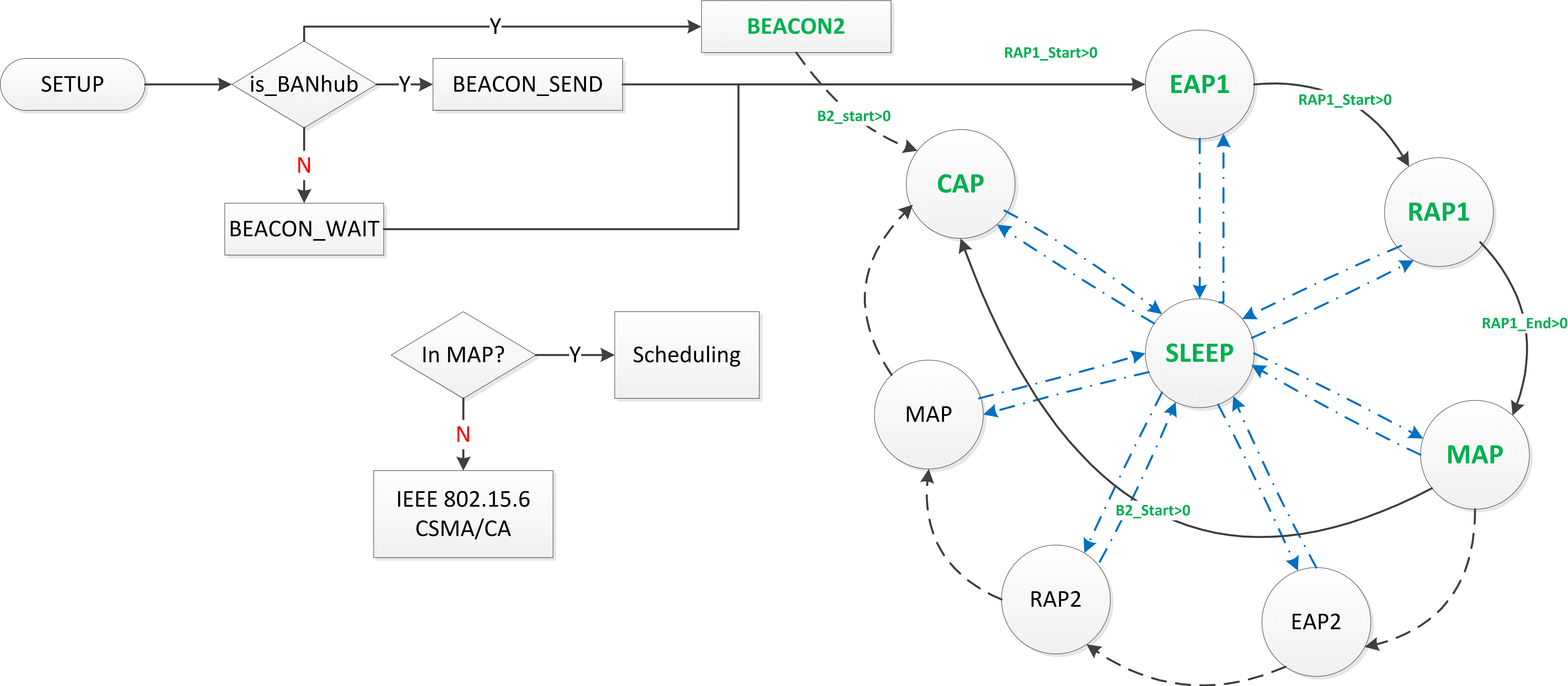Currently only Beacon mode with superframes, and CSMA/CA for Random access are implemented. Source code and some documentation ==> billryan/WBAN-OPNET-Simulation
For various reasons, I must develope a IEEE 802.15.6/WBAN Simulation Model for OPNET Modeler. For those who do not want to use OPNET Modeler, boulis/Castalia would be a good choice. Thanks for the hardwork of boulis with Castalia, I refered his MAC design experience for implementation under OPNET. Thanks for the open-ZB.net - IEEE 802.15.4/ZigBee OPNET Simulation Model, I refered a lot of code from this powerful Simulation Model.
Simulation Platforms:
- OS: Windows XP SP3
- Simulator: OPNET 14.5 with Educational version
Architecture of this Simulation - Node Model in OPENT 14.5

Application Layer
Purpose: Generate APP Layer traffic with 8 different user priority. Each traffic may subjected to different distribution function model.

Though you can generate traffic with different user priority, it would be better to set only one traffic type. The user priority is related to the CSMA/CA contention window.
MAC Layer
The FSM in OPNET MAC Layer node model is shown as below:

On the top of MAC Layer, I introduced FSM into Superframes for different Phases such as EAP, RAP, MAP and etc. The real FSM(interrupt and handling function) in the FB block is shown as below:

For simplicity, only EAP1/RAP1/MAP/B2/CAP are implemented.
Battery Module
Purpose: Calculating energy consuming for TX, RX, Idel and Sleep mode. Note: the battery module has been merged into MAC Layer for more refine control of energy based algorithm.
Physical Layer
Purpose: Transmit or Receive frames from shard wireless channels.